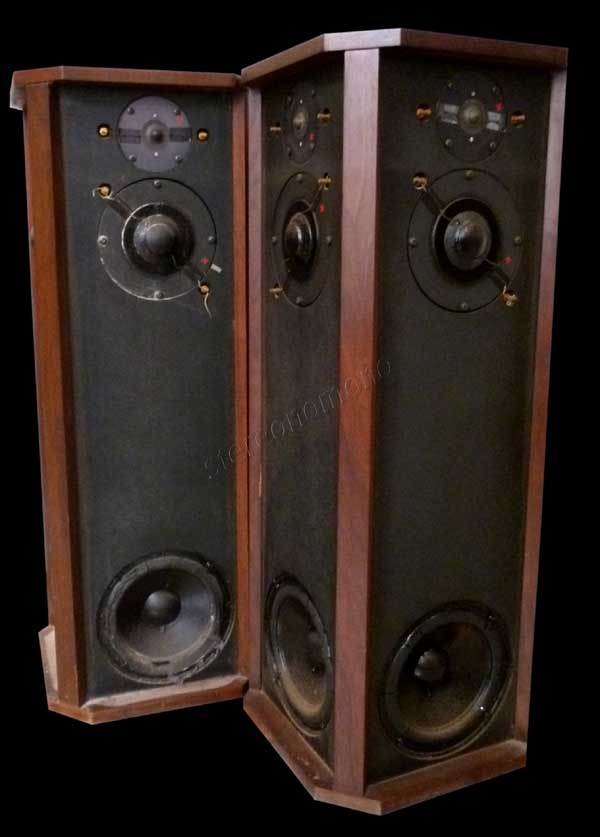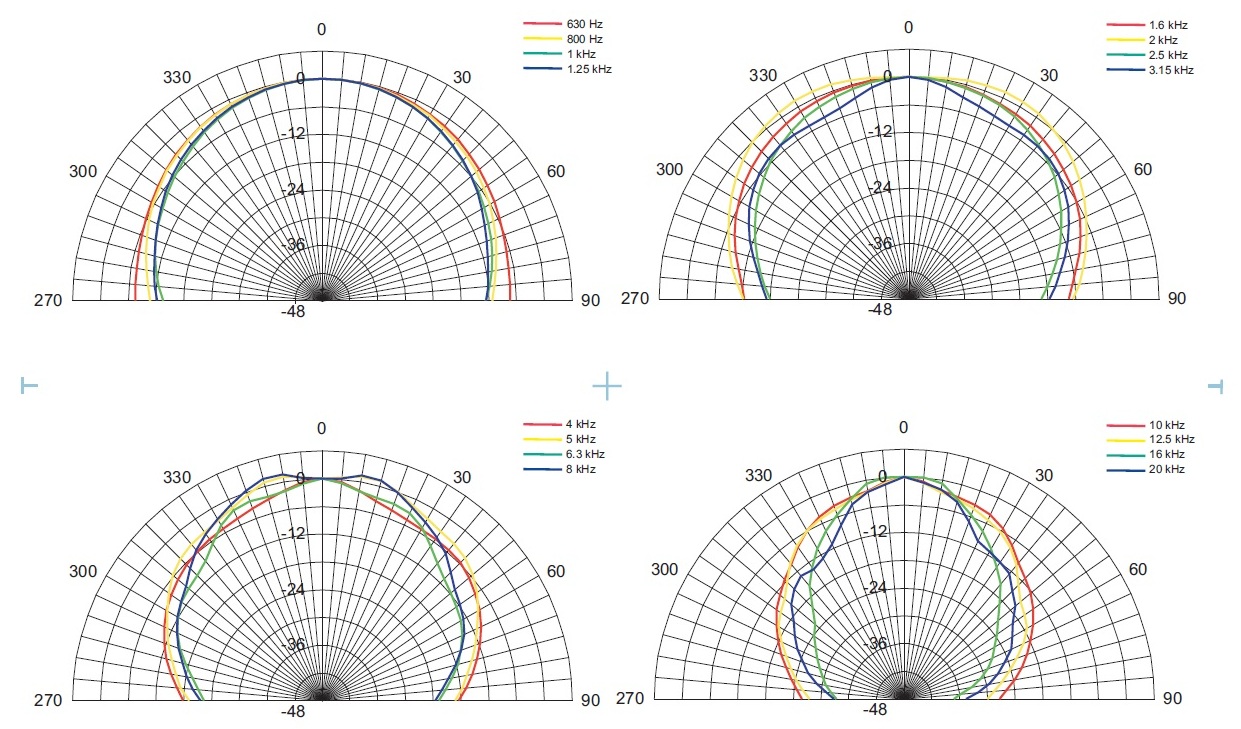I believe that floor reflection must me attenuated and low-passed as much as possible
There are many ways to do this. Vertical line array is also an option 😀 I never forget my dipole line array days, the bliss of NO floor (nor ceiling) reflections. Aah. I'm tempted to go somewhat back to that direction.
I also believe that (and this belief seems to have been confirmed independently by Mr Croft research quoted earlier in this thread) - that we need a certain optimal ratio of direct to off ceiling reflected sound
this ratio depends on the speaker directivity, the angle at which it fires up to the ceiling and the listening distance
I cannot find the Croft research in this thread, it's getting too long. Did he publish something ?
I also believe in the necessity of time-coherence in the sense of the wavefront fidelity - all early reflections should preserve the shape of the initial transient that reaches the listener as the direct sound
The question is in which freq range this should be fullfilled ?
> 2kHz ? > 1kHz ? > 500 Hz ?
- Elias
There are many ways to do this. Vertical line array is also an option 😀 I never forget my dipole line array days, the bliss of NO floor (nor ceiling) reflections. Aah. I'm tempted to go somewhat back to that direction.
IMHO the only real alternative to a floor coupled flooder would be a real line source like Beveridge 🙂
on the contrary, in practice, an array doesn't eliminate the early vertical reflections but only, so to speak, spreads the reflection in time, while lowering the level of each portion
I cannot find the Croft research in this thread, it's getting too long. Did he publish something ?
he posted on a Swedish forum - quoted here
The question is in which freq range this should be fullfilled ?
> 2kHz ? > 1kHz ? > 500 Hz ?
it seems that we discussed this issue once, indirectly, here:
http://www.diyaudio.com/forums/multi-way/105136-putting-science-back-into-loudspeakers-34.html
because it looks that it may be a matter of which part of the sound source's frequency range determines the particular shape of the first wavefront, of the first 0.6 ms of sound or - in other words - the fluctuations of the first 20 cm of it🙂
so I believe that we can safely assume that anything below 400 Hz is relatively unimportant - from this perspective exclusively of course!
Last edited:
he posted on a Swedish forum - quoted here
The quotes in your post #1689 are actually very interesting, now that I read them again 🙂
Specificly, he states that if tweeter is placed on the floor aimed at the listener (as in Snell speaker) the image will be at the floor. That is no surprise, of course.
Then interesting are the two alternative cures he presents:
1) Lift the tweeter at the ear level while keep midrange at the floor
2) Keep the tweeter at the floor and modify freq response to mimic HRTF response as if tweeters would have been placed at ear level
Interesting is he do not mention the ceiling reflection ?!? It's odd because with the help of ceiling reflection the image can be lifted too from the floor.
- Elias
Interesting is he do not mention the ceiling reflection ?!? It's odd because with the help of ceiling reflection the image can be lifted too from the floor.
I found that it doesn't work reliable enough. Phantom sources are all over the place.
By the way, James Croft proposed two solutions to the "sound from the floor" problem in the thread I had linked earlier. Please see http://www.faktiskt.se/modules.php?name=Forums&file=viewtopic&p=1110176#1110176
I don't think the HRTF-approach works reliably but the Allison-like approach of placing the woofer/mid boundary-coupled and the tweeter at ear height looks promising for a wide dispersion design.
Yeah ! I'm going to try that approach 😎
- Elias
Yeah ! I'm going to try that approach 😎
- Elias
Yes, please. At that time I had slapped together a quick prototype but ran into problems. Hope you're more successful. I think this is a very promising approach.
I found that it doesn't work reliable enough. Phantom sources are all over the place.
many others have found it works very reliably
something must be wrong with Markus' room or system or with His execution of the idea
Interesting is he do not mention the ceiling reflection ?!? It's odd because with the help of ceiling reflection the image can be lifted too from the floor.
- Elias
perhaps such a solution goes against a certain engineering mentality of forcing things by means of sophisticated tools? 😛
Yeah ! I'm going to try that approach 😎
- Elias
for my part I am highly sceptical
for some reasons Allison Himself didn't try it in His commercial designs -when the crossover point is set at 350 Hz one can hardly say that the midrange is floor coupled

Phantom sources are all over the place.
New definition of spaciousness 😀
Yes, please. At that time I had slapped together a quick prototype but ran into problems. Hope you're more successful. I think this is a very promising approach.
What problems there could have been ?
I'm planning to try a simple 2-way. Bass-midrange at the floor and CD horn at ear level, crossed somewhere 1-2kHz.
- Elias
for some reasons Allison Himself didn't try it in His commercial designs -when the crossover point is set at 350 Hz one can hardly say that the midrange is floor coupled
I just searched info on Allison and found out it does not prevent floor reflections but only at the bass.
The two sided placement of drivers is still a bit unusual 😉

New definition of spaciousness 😀
Spacousness isn't the problem but phantom sources in the vertical plane are even more fragile than in the horizontal plane.
What problems there could have been ?
The problem is that the crossover slope has to be very steep.
I'm planning to try a simple 2-way. Bass-midrange at the floor and CD horn at ear level, crossed somewhere 1-2kHz.
Size of woofer? What's the directivity of the horn?
so I believe that we can safely assume that anything below 400 Hz is relatively unimportant - from this perspective exclusively of course!
Having high directivity down to 400Hz and still be coincidental radiator would mean a CD horn of quite big size. I believe a compromise is to be made.
I do have a strong hypothesis that highly directional bass-midrange placed on the floor aimed at the listener and CD high freq radiator placed at the ear level would yield the optimal.
Of course, then you would have three of these speakers and use linear stereo matrix 😛
- Elias
I just searched info on Allison and found out it does not prevent floor reflections but only at the bass.
Well, it does prevent floor reflections but not all of them.
Of course, then you would have three of these speakers and use linear stereo matrix 😛
You would use a frequency-dependent matrix wouldn't you 🙂
I never forget my dipole line array days, the bliss of NO floor (nor ceiling) reflections. Aah. I'm tempted to go somewhat back to that direction.
- Elias
Hi Elias, what are you missing with a dipole line array?
The problem is that the crossover slope has to be very steep.
Ok, but it doesn't appear as a major problem. Do you think standard LR 4th order is not enough ?
Size of woofer? What's the directivity of the horn?
I'll try with 10" PA mid-woofer I have, at first in a simple baffle. The horn will be the small 18sound.
Hi Elias, what are you missing with a dipole line array?
I miss the small detail of music that was present still at the listening position in my normal living room. It is comparable to moving very close to an ordinary box speaker.
It's due to high directivity in the frequency range below about 1kHz. My array was crossed at 1.4-2kHz to a tweeter, so it all has to do with low and low-midrange freqs and how room affects that range.
- Elias
Having high directivity down to 400Hz and still be coincidental radiator would mean a CD horn of quite big size.
I believe that a constant time coherence (it is not the same thing as time coherence, phase linearity etc. on axis) in the range of 400<4000 Hz is critical for required direct/reflected wavefront consistence
But I don't think we need "high directivity" at all!
What we need instead is a directivity which allows us to send some more energy in one direction and some less in another by means of more or less tilting and toeing
From my experience a smaller Kef UniQ unit is not directional enough for best results but an 8 inches whizzered fullranger is.
Therefore I think that - for example - an 8 inches Tannoy Dual Concentric has enough directivity:

and it has the required constant time coherence as a bonus 🙂
CD high freq radiator placed at the ear level
...aimed at the listener? You mean tweeter perceivable as a tweeter? Splitting images, HRTF and pinna errors?
a constant time coherence (it is not the same thing as time coherence, phase linearity etc. on axis) in the range of 400<4000 Hz is critical for required direct/reflected wavefront consistence
very unclear, what did I mean? 😕 🙁 😱
 🙂
🙂well, let's try again - in other words - the reflected sound must be consistent with the direct sound in the time domain, the shape of the reflected wavefront must be essentially similar to the shape of the direct wavefront
it is not about faithfully reproducing square waves or about reproducing a single step response
I hope it is more clear now 😱 🙂
- Home
- Loudspeakers
- Multi-Way
- The Advantages of Floor Coupled Up-Firing Speakers